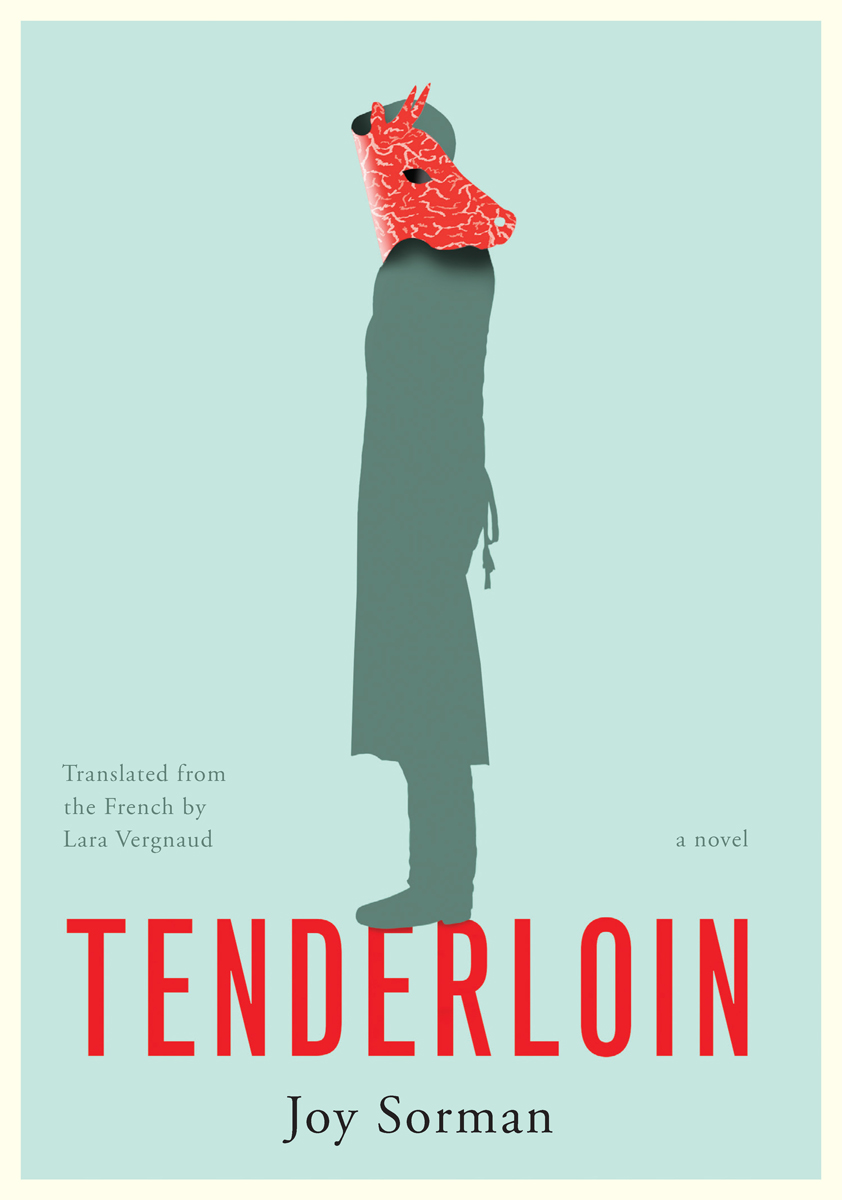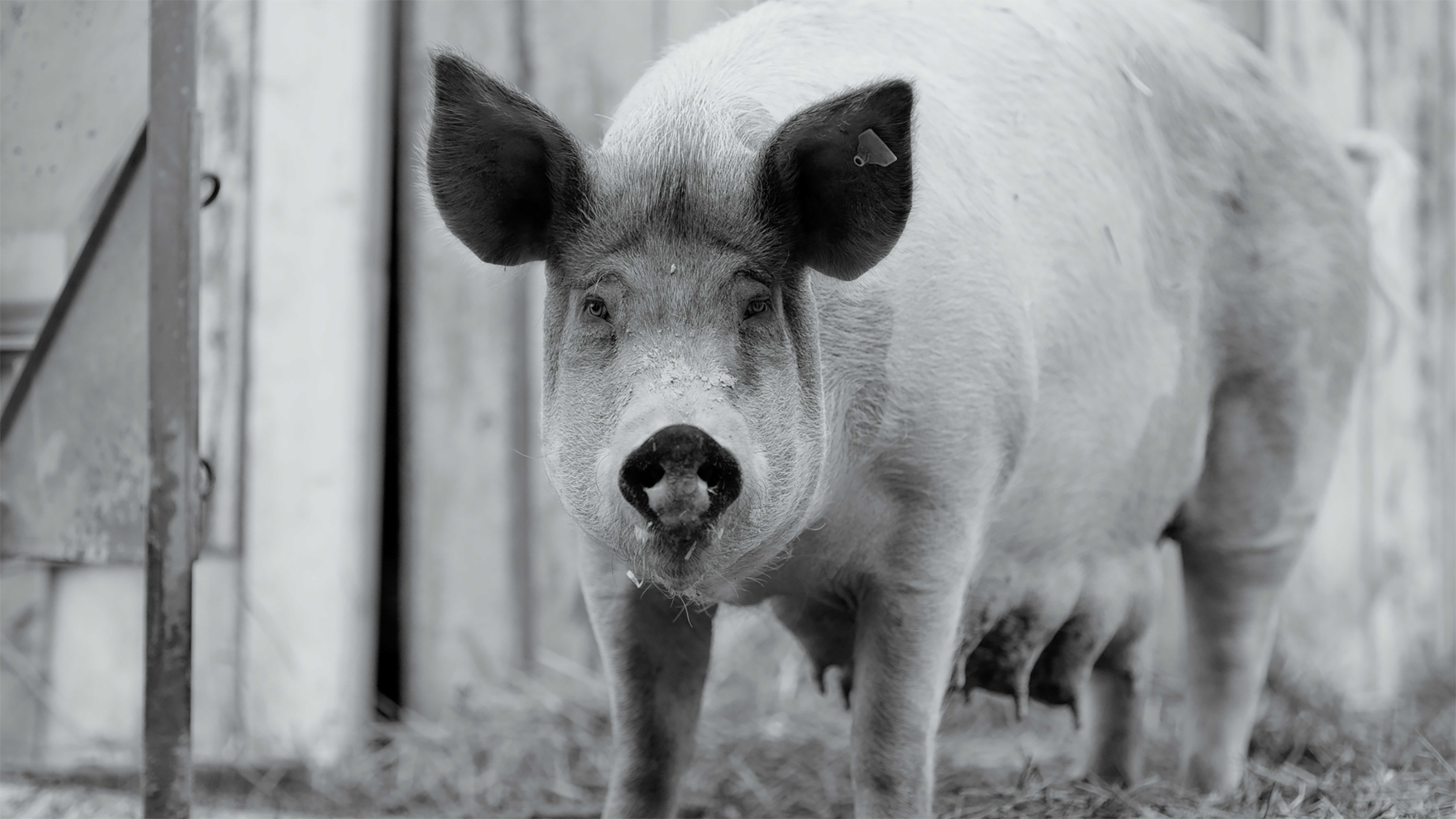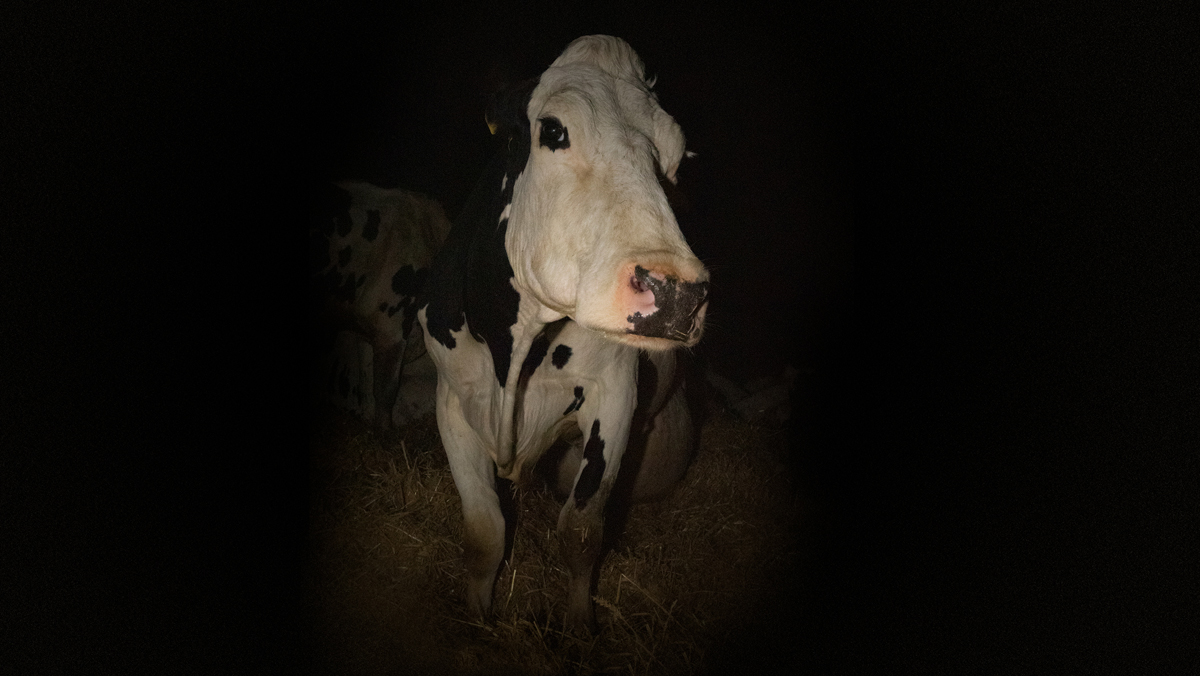 4 Columns
4 Columns
We’re back with a new issue September 6! Until then, enjoy this archival roundup of reviews that may make you think twice about what’s for dinner . . .

Gunda. Courtesy Neon.
Sizzling steaks, Sunday roasts, stuffed turkeys . . . humans are devouring nonhuman animals at rates higher than ever before in world history. Consequently, their raising, slaughtering, and preparation for consumption has been elevated to an inhumanly industrial scale. They say you are what you eat—and for the carnivorous majority among us, what we’re eating is flesh born and killed in sorrow, terror, and pain. This week, we highlight four pieces from our archive that offer global perspectives on the eating of animals and the related business concerns that surround this practice.
• • •

A tale of a butcher possessed by his craft, French author Joy Sorman’s Tenderloin, published in English translation earlier this year by Lara Vergnaud, “is an extraordinarily pungent book—saturated with smells of blood, flesh, and effluvia in various degrees of freshness and decomposition, mingled with the odors of stale menthols and blistering Clorox,” writes 4Columns senior editor Ania Szremski. “It is just as potent visually, with its imagery of animals being stun-gunned in their vulnerable foreheads, strung up by their defenseless feet, the cutting of their recently screaming throats, the flaying of their once-protective skins, the wet slapping of their entrails onto conveyor belts, the sharp severing of their muscles from their bones. These muscles are sliced and pounded and tenderized into jewellike parcels, described by Sorman in engorged paragraphs detailing their sheen, textures, and colors as if they were Renaissance paintings, no longer recognizable as animal. In every drowsy, long-lashed cow there is the potential for an expertly seared filet mignon, and the author narrates each gory step of that transformation with words so unflinching and delectating that bile rose in my throat. All of which is to say, Tenderloin is an astonishing read.”
• • •

Gunda. Courtesy Neon.
Russian filmmaker Victor Kossakovsky became a vegetarian as a child, after witnessing the slaughter of a beloved pig that he came to know during childhood visits to the countryside, 4Columns film editor Melissa Anderson explains in her review of his 2021 cinematic portrait of a sow and her brood, Gunda. The film “takes up the question posed by John Berger in his still-influential 1977 essay ‘Why Look at Animals?’,” Anderson posits. “At its most fundamental level, Gunda underscores one of the essential truths laid out by Berger in his treatise: ‘Animals are born, are sentient and are mortal.’ Calling attention to this irreducible fact, Kossakovsky’s documentary is a gentle but no less potent polemic, especially for those viewers more prone to thinking of Gunda’s subjects as dinner rather than as conscious beings.”
• • •
MEGAN MILKS ON MY HEAVENLY FAVORITE

Dutch writer Lucas Rijneveld’s second novel, My Heavenly Favorite, published in English translation by Michele Hutchison, may not seem to have much to do with the meat industry per se, given its Lolita-esque preoccupations. But it’s no accident that the Humbert Humbert figure here, Kurt, is a farm veterinarian visiting a family who has lost their entire dairy herd to hoof-and-mouth disease—the devastating ailments so common in present-day animal-raising practices serve as the rotten backdrop for a story of diseased, deranged pedophilic obsession. “Breathless, vertiginous, hallucinatory, Kurt’s musings slither on endlessly, twisting and torquing through lust, fantasy, pop lyrics, the quotidian details of life on the farm,” writes Megan Milks in their review for 4Columns. “Our vet’s combined obsessions with animal husbandry, preadolescent girl–types, and the literary make for a peculiar and unsettling—sometimes even funny—reading experience. ‘I knew already that we were unusual, unique,” he writes, “even though I considered the word unique as ugly as a tetchy bull after the manure has been cleaned from under its feet.’ ”
• • •

Luma in Cow. Courtesy Kate Kirkwood.
Damien Hirst’s Mother and Child Divided (1993) features a cow and a calf, each bisected and preserved in glass tanks full of formaldehyde. “The work should attract you and repel you at the same time,” the artist has explained. “I see them as death objects.” So Sukhdev Sandhu points out in his review of English filmmaker Andrea Arnold’s Cow, in which, he argues, she is very much in agreement with Hirst. Almost every second of the documentary “is freighted with the viewer’s expectation of how it will end,” Sandhu writes. “The cow in question is called Luma. She’s an English dairy cow. A Holstein Friesian cow. Does any of this matter? How many of us can name different breeds of cows? The scale and impersonality of modern agribusiness is such that perhaps it’s not just romantic, but a form of Cartoon Network deification to think of Luma as a singular, specific creature. . . . Still, the end, when it comes, is short, sharp, upsetting.”